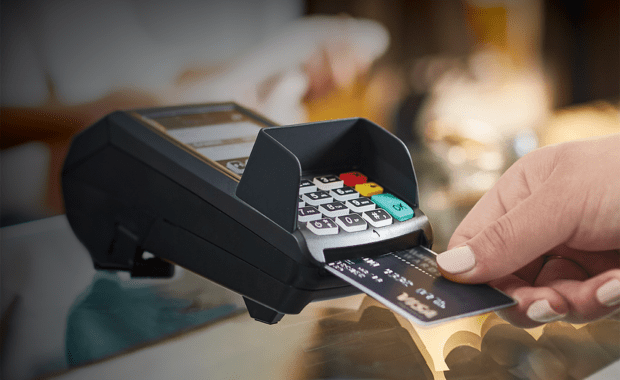The main function of a credit card processor is to facilitate the transaction between merchants and banks for credit card payments. In most cases, credit card processors actually own payment networks that connect with different financial institutions around the world – these are the systems that allow merchants to accept payments from consumers using their cards. By extension, they also charge fees per each transaction.
The whole process boils down to the same thing that happens between banks and consumers with automatic teller machines (ATM), only in this case, it’s through a network of payments terminals, terminals in stores or online websites.
To put things into perspective, think of how you would use your ATM card at a machine – you would type your PIN, select your account (or checking if it’s an ATM for savings), withdraw money. For the merchant, there is also a sequence of steps that has to be followed – even though it’s not as complicated as what you do at the bank machine.
The first thing he needs to do is find the right credit card processing solution for his business. There are a few things the merchant should consider in this step:
The first thing he needs to do is find the right credit card processing solution for his business. There are a few things the merchant should consider in this step:
- Merchant service provider or MSP – This is also sometimes called acquirer (credit card processor). Every credit card processing solution comes with this – they are the ones that actually acquire the merchants.
- Payment network – Networks like MasterCard, VISA and American Express provide access to bank networks around the world. The merchant service provider will be able to tell the merchant which of their payment network is best for his business.
- Point of sale or merchant terminal – this is the equipment that allows the merchant to receive credit card payments through a network of terminals, online websites and mobile systems. It will connect to the payment network’s bank, acquirer and processor.
- Pricing structure – Some processors are also MSPs which means they provide payment networks and merchant terminals. These will usually charge the highest rates because they are providing both components in the equation. Rates can also vary depending on which MSP (processor) is given to the merchant, the services involved and the type of business.
For example, using a credit card processor to buy electricity or water from your utility company will be different from buying gas. Retail stores paying with credit cards will also be charged differently than a guy selling stuff on eBay or Craigslist.


